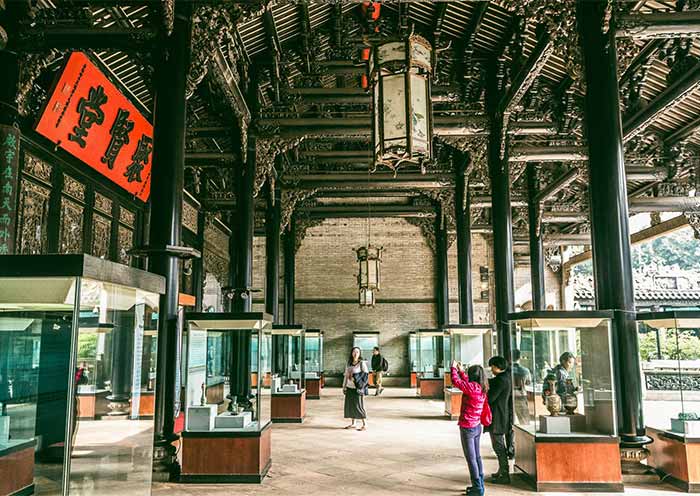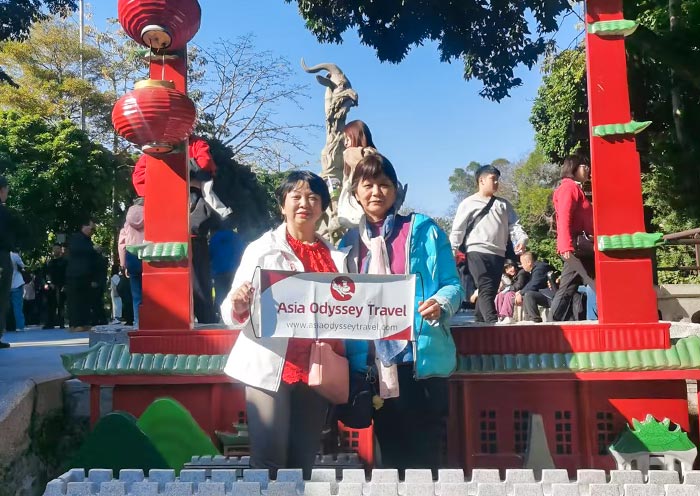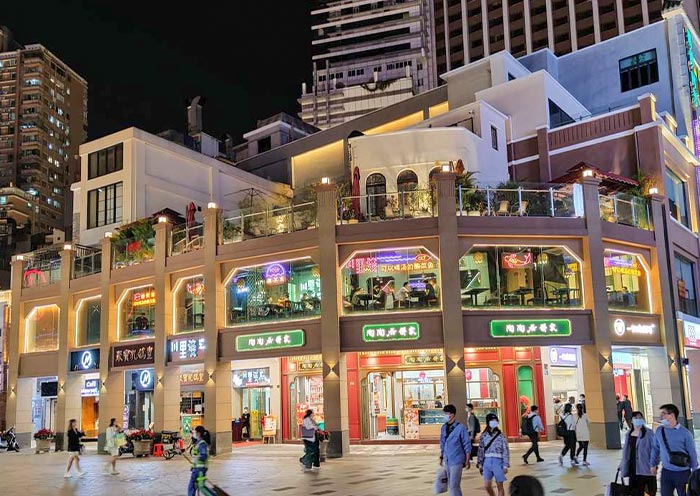We would like to thank Victor (the travel consultant),Tommy (our tour guide) and Driver Sifu (my apologies for not getting him name) making our 7 days *Guangzhou-Foshan-Shenzhen* such a memorable trip for our family. We travelled in a group of 16 family members (Ranging 4 years to 73 years) and they just done that so perfectly. Tomorrow (29/01/20525) is our Chinese New Year and I thank this opportunity to wish all of you a properous and healthy Year of Snake
- Highlights
- Itinerary
- Price
- Trip Notes
- Accommodation
- Photos
- Reviews
Do you like Cantonese food? Have you heard of Foshan Kung Fu and Lion Dance? Interesting about Lingnan Culture? Are you people of Chinese origin? How about a trip to Kaiping Diaolou, the Hometown of Overseas Chinese? Take our 3 Days Guangzhou Foshan Kaiping Tour with Diaolou & Lingnan Culture to explore the only the only World Cultural Heritage Site in Guangdong province, Cantonese Cuisine, Lingnan Architectures, Chinese Martial Arts, Lion Dancing, Cantonese opera, stories of Overseas Chinese with us.
In Guangzhou City, the capital of Guangdong province and the third-largest city in China (after Shanghai and Beijing), you can have a better understating of Guangzhou, a major and only port city that has been opening and thriving for over 2,000 years. As a city in southern China, Guangzhou is known as "Flower City", due to its lush greenery and colorful flowers all year round. You won’t miss the top attractions of Guangzhou, such as Chen Clan Ancestral Hall, Yuexiu Park, Nanyue King Mausoleum Museum, Huacheng Square, Canton Tower, and Pearl River, to have a bite of Cantonese food and Lingnan culture.
In Foshan City, the third-largest city in Guangdong and the hometown of Bruce Lee, pottery, Cantonese opera, Chinese martial arts, and lion dancing arts, you can explore more about Lingnan culture and Lingnan Architecture. With a visit to Ancient Nanfeng Kiln, Foshan Ancestral Temple, Lingnan Tiandi, and Liang Garden, you will fall in love with its brilliant pottery architecture ridge tile (Shiwan ceramics), unique Yue Opera (Cantonese opera), traditional lion dancing performance, and beautiful Lingnan garden.
In Kaiping of Jiangmen City, the Land of Diaolou, you will not miss the visit to the World Heritage Site - Kaiping Diaolou and Villages, which is recognized as one of the 50 must-visit places in China during one's lifetime. The owners of Kaiping Diaolou were overseas Chinese who ventured out into the world from here, bringing back Western culture and artifacts. Let us step into the Diaolou and listen to the stories behind the Diaolou.
Take our 3 Days Guangzhou Foshan Kaiping Tour now! From “Flower city” (Guangzhou) to “Hometown of Cantonese opera” (Foshan) and the hometown of overseas Chinese (Kaiping), you will have a deep understanding of Lingnan Culture by its food, streets, museums, parks, temples, rivers, architectures, gardens, and people.
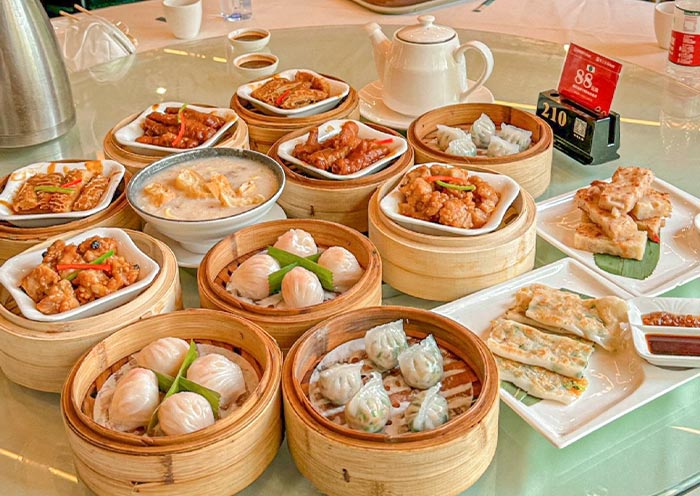









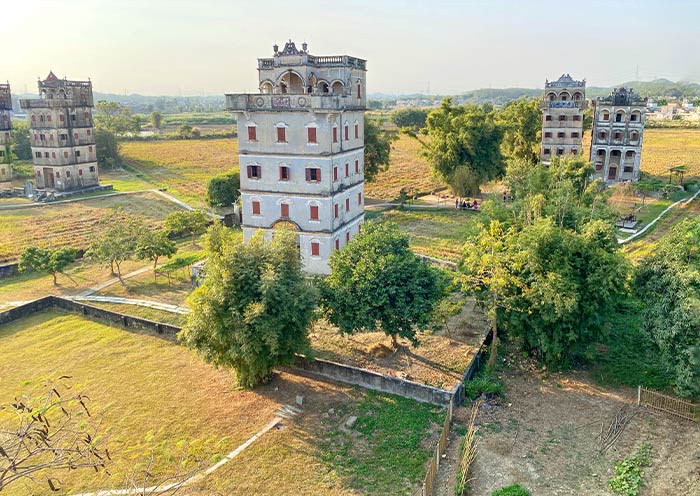
Itinerary at a Glance
Guangzhou (1 Day)
Chen Clan Ancestral Hall, Yuexiu Park, Nanyue King Mausoleum Museum, Beijing Road, Huacheng Square, Canton Tower(Outside View), Pearl River
Foshan(1 Day)
Ancient Nanfeng Kiln, Foshan Ancestral Temple, Lingnan Tiandi, Liang Garden
Kaiping (1 Day)
Kaiping Diaolou and Villages (World Heritage Site): Zili Village, Li Garden
Itinerary Day by Day
Full-day exploration of Guangzhou City, the capital city of Guangdong province and the third-largest city in China (after Shanghai and Beijing). Through its Ancient Central Axis and New Central Axis, you can trace back to the "Origin" of Guangzhou and embrace the "Future" of Guangzhou by visiting the top attractions of Guangzhou such as Chen Clan Ancestral Hall, Yuexiu Park, Nanyue King Mausoleum Museum, Beijing Road, Huacheng Square, Canton Tower, Pearl River. Sure you will start to enjoy the Cantonese food today from the traditional Guangzhou morning tea to all kinds of Cantonese cuisine, a dim sum meal, and local snacks.
Begin your journey at the Chen Clan Ancestral Hall (Chen Family Ancestral Hall陈家祠), representing traditional Lingnan architecture (岭南建筑) and Lingnan culture. The clan concept in the Lingnan Region (which covers Guangdong and Guangxi provinces, and parts of Fujian) is very strong, and people attach great importance to the worship and memorial of their ancestors. The ancestral hall is the place where people worship their ancestors. The Chen Family Ancestral Hall stands as the largest, best-preserved, and most exquisitely decorated ancestral hall-style architecture in China, earning it the title of the "Jewel of Lingnan Architectural Art". The hall showcases the "Three Carvings" (三雕) - stone, brick, and wood carvings; the "Two Moldings" (两塑) - ceramic and lime sculptures; and additionally, the intricate cast ironwork and exquisite color paintings, together recognized as the "Seven Wonders" (七绝). You will love the various legendary divine beasts of China that stand on the roofs. The Chen Clan Ancestral Hall uses the famous Shiwan Clay Sculptures (石湾陶塑) on its roof, commonly known as "Shiwan Ridge Tiles"(石湾瓦脊). These ridge tiles are produced in Shiwan Town (石湾镇), where the Nanfeng Ancient Kiln is located (we will visit it tomorrow). Each ridge tile has a unique decorative theme, showcasing legends, stories from Cantonese opera (粤剧), folk auspicious patterns, and a total of 1,109 sculpted figures. The Chen Clan Ancestral Hall also houses the Guangdong Folk Art Museum, where you can witness traditional Guangdong crafts such as ivory carvings, jade sculptures, Guangdong embroidery, and Guangdong-colored ceramics.
Then, you can pay a visit to Yuexiu Park (越秀公园), one of the landmarks of Guangzhou, like the locals. With Yuexiu Mountain in the center, the park has remnants from over 2,000 years ago left by the Nanyue King Zhao Tuo, hence its initial name "Yue King Mountain." Sun Yat-sen used to visit Yuexiu Mountain for reading and official duties. With a stroll to the Five Rams Sculpture (五羊石雕), you will learn why Guangzhou got its nickname as the "City of Rams"(羊城). According to the lore, during a severe famine thousands of years ago, five immortals rode into Guangzhou on five rams and presented the people of Guangzhou with rice stalks held in their mouths and wished the region to be forever free from famine. After their departure, the five rams transformed into stone. Now, it not only embodies the city spirit of gratitude, compassion, mutual assistance, diligence, and bravery but also becomes a symbol of Guangzhou.You will have option to visit the Zhenhai Tower (Five-Storied Pagoda镇海楼self-pay). During the Ming Dynasty (600 years ago), it was the highest building in Guangzhou, and a good place for the ancient people of Guangzhou to enjoy the panoramic view of the Pearl River (珠江) and Baiyun Mountain (白云山). This tower now hosts the Guangzhou Museum, which serves as a crucial venue for collecting and displaying historical artifacts of Guangzhou. Also perched on the mountain is the Sun Yat-sen Monument (中山纪念碑), built to commemorate the democratic revolutionary Sun Yat-sen (孙中山).
After the Yuexiu Park tour, time to explore the Western Han Dynasty Nanyue King Mausoleum Museum(西汉南越王墓博物馆). Here, you'll get to witness firsthand the genuine tomb of Zhao Mo, the second emperor of the Nanyue Kingdom during the early years of the Western Han Dynasty (2,000 years ago西汉). The tomb is the largest and the best preserved color-painted stone chamber found to date in the Lingnan region in South China and has unearthed numerous artifacts. The museum serves as a reminder of Guangzhou's ancient history, the Nanyue Kingdom was a significant regional power and provides crucial insights into the Nanyue culture. Among all the 1,000 pieces of cultural artifacts, you won’t miss the spotlight “Jade Burial Garment” which is made up of 2,291 pieces of jade, and also a collection of over 400 delicate ceramic pillows.
After that, head south to reach Beijing Road (北京路) - one of the most popular pedestrian streets in Guangzhou. This vibrant street offers a combination of global brands and local boutiques, as well as a wide range of dining options, from local street food to dim sum and Cantonese cuisine from high-end restaurants. Known as Guangzhou's "millennium-old pathway", Beijing Road, once the nerve center of Guangzhou's political, economic, and cultural activities, has been the city's central axis since its establishment, with the city expanding outward from this starting point. As you meander down the street, take note of the transparent glass panels underfoot. These panels offer a unique window into the past, revealing 11 ancient road layers from five historical periods: the Southern Han, Tang, Song, Ming, and Qing dynasties, as well as the base of the Song Dynasty's Gongbei Tower.
Next, you will shift towards the contemporary heartbeat of the city—the New Central Axis. Start your exploration at the Zhujiang New Town (珠江新城), which is Guangzhou's central business district and the symbol of its modern skyline. Home to towering skyscrapers: the sleek Guangzhou IFC Tower and the majestic CTF Finance Center. Looming in the distance is the iconic Canton Tower, an astonishing feat of engineering soaring to 600 meters. Locally, these three titans are affectionately dubbed "Guangzhou Three Piece Set" (广州三件套). The heart of the New Central Axis, Huacheng Square (花城广场), is a sprawling green urban park and public space surrounded by landmarks like the Guangzhou Opera House, designed by the famous architect Zaha Hadid, and the new Guangzhou Library, the Guangdong Provincial Museum. Most importantly, appreciate the slim outline of the iconic Canton Tower (广州塔) on the opposite bank of Pearl River. The square comes alive in the evening, with water features, light shows, and the shimmering reflections of the city's skyline in its man-made lakes.
Lastly, have a stroll along the Pearl River (珠江), the mother river of Guangzhou, especially during the evening. With the city lights reflecting on the water, and the famous Pearl River Cruise passing by, it's a picturesque scene blending the old and new worlds of Guangzhou. As you conclude your journey along the Old &New Central Axis, you're left with an impression of a city that respects its past, yet eagerly embraces the future.
Evening Optional Activity: Pearl River Night Cruise (around 60 min per tour)
Dive into Guangzhou's enchanting night atmosphere with a memorable cruise along the Pearl River. A night cruise (from 19:00 to 22:00) provides an unmatched vantage point to admire Guangzhou's skyline. Drift past iconic Guangzhou landmarks such as the Canton Tower, which shines brilliantly against the night sky, and the beautifully illuminated bridges that stretch across the river.




This morning you will head to Foshan City (35km, 1h), the hometown of Bruce Lee and a popular tourist destination for Wing Chun style of Kung Fu. As the hometown of pottery, Cantonese opera, martial arts, and lion dancing arts (陶艺之乡、粤剧之乡、武术之乡、狮艺之乡), Foshan is also an ideal place to explore more about Lingnan culture (岭南文化). With a visit to Ancient Nanfeng Kiln, Foshan Ancestral Temple, Lingnan Tiandi, and Liang Garden, you will fall in love with Lingnan Architecture, the traditional world of Chinese ceramics (pottery making), Yue Opera (Cantonese opera粤剧), lion dancing performance (醒狮表演), Wing Chun Kung Fu (Huangfeihong/Yip Man/Bruce Lee咏春拳), Lingnan garden.
After breakfast, head to Nanfeng Ancient Kiln (南风古灶) in Shiwan Town, an important pottery base in Ling Nan. The tall chimney is a landmark here. Foshan is known as the "Pottery Capital of the South" (南国陶都) and Shiwan ceramics (石湾陶瓷) are the shining gem in the crown of Foshan ceramics. The Nanfeng Ancient Kiln, known as the "Living Fossil of Ceramics"(陶瓷活化石), stands as the best witness to the long-standing ceramic culture in Shiwan Town (石湾镇). During the Qing Dynasty, the heyday of Shiwan ceramics, there were a total of 107 dragon kilns (Long Kiln龙窑), of which only three remain today. Built between 1506 and 1521, Nanfeng Ancient Kiln is the oldest and only wood-fired ancient dragon kiln still in operation. It has been continuously producing ceramics for over 500 years and is listed in the Guinness World Records. You will see the dragon kilns built on the slopes, like dragons descending from the sky, which is why the locals call them "dragon kilns". And, you can not only climb the stairs and enter the kiln but also learn about the ceramic-making process. The ceramics produced by the folk kilns in Shiwan Town, represented by Nanfeng Ancient Kiln, cover a wide range of categories, which were popular throughout the Pearl River Delta region and around Asia. At that time, various household utensils such as basins, sugar jars, and ridge ornaments for roofs (such as those seen in the Chen Clan Ancestral Hall) were in high demand, as well as flower pots, glazed tiles, and ridge tile (flower ridges瓦脊/花脊) for garden ceramics. They were all popular and had excellent export volumes, second only to Jingdezhen (景德镇) in Jiangxi Province. Surprisingly, there is a 400-year-old banyan tree standing at the end of the Nanfeng kiln, unaffected by the kiln's temperatures exceeding 1,000 degrees Celsius.
In addition to visiting the dragon kilns, you can visit the Guangdong Shiwan Ceramic Museum (free admission; closed on Mondays) or stroll along the adjacent ancient streets and alleys, experiencing the red walls, green tiles, and stone-paved roads. This place is perfect for photography and engaging in ceramic art experiences. You can also explore Gongzai Street (named after Shiwan Art Pottery石湾公仔) and find some Shiwan ceramic trinkets (ceramic fridge magnets) to take home.
Optional Activities:
You can enjoy your Foshan cultural experience with intangible heritage by pottery art making (0.5 hours), or paper cutting (1 hour) during your visit to Ancient Nanfeng Kiln.
In the afternoon, move to Foshan Ancestors' Temple, the must-visit place in Foshan. The Ancestors' Temple (Zumiao Temple 祖庙) was built in the Northern Song Dynasty (960 - 1127) for people to worship the North Emperor - the God of Taoist culture. Also, people of Chinese origin (ethnic Chinese) from all over the world will visit here to follow their ancestors' steps to find their roots. Foshan is famous for the origin of Kung Fu masters, such as Wong Fei Hung (黄飞鸿1856-1925), Yip Man (叶问1899-1972 the first person in the world to be included in the World Record Association for Wing Chun Kung Fu), and Bruce Lee (Li Xiaolong李小龙1940-1973) while is the birthplace of Chinese Kung Fu (Chinese Martial Arts), lion dance, pottery, and Cantonese opera, and the Foshan Ancestors' Temple is the best places to include them all in one place. Today, famed as the "Palace of Oriental Folk Art", this Taoist temple is more like a museum of architecture and folk culture which is a combination of Zumiao Temple, Confucius Temple, Calligraphy Corridor, Exhibition Hall, and Gardens. You can not only appreciate its brilliant ridge tiles (use the Shiwan ceramics made in Nanfeng Ancient Kiln) of Lingnan architecture but also see the exhibition halls of two masters of Chinese Kung Fu, Huang Feihong (黄飞鸿the unrivaled master of martial arts, medicine, and lion dancing) and Yip Man (叶问Bruce Lee's Master), to feel the profound culture of martial arts there. By the way, in some famous movies, Kungfu stars like Jackie Chan (成龙) and Jet Li (李连杰) have both portrayed Wong Fei Hung (Huangfeihong) since 1949, while Donnie Yen (甄子丹) and Tony Leung Chiu Wai (梁朝伟) have both portrayed Yip Man (a master of Wing Chun Martial Art). You can also join many folk activities, such as Lion Dance, and Yue Opera. If coming at the right time, you can even enjoy the Chinese Kung Fu show and the New Year's Blessing Ceremony in the temple.
Tips for the Activities inside Foshan Ancestral Temple:
1. Lion Dance Performance (Free admission at Wong Fei Hung Memorial Hall黄飞鸿纪念馆外) : The performance is held from 10:00 to 10:40, 14:15 to 14:55, and 15:30 to 16:10 every day, except on rainy days.
2. Cantonese Opera (Free admission at Wanfutai Stage万福台): Yue Opera is performed from 13:30 to 15:30 on weekends and on the first and fifteenth days of the Chinese lunar calendar.
The Lion Dance Performance is a highlight of the Ancestral Temple as it is a combination of Chinese Martial Arts, dancing, and drum music. It is a 40-minute performance outside Wong Fei Hung Memorial Hall by professional masters and apprentices from Foshan martial arts schools. You will have a better understanding of the martial arts that have influenced the world greatly and so many Chinese are proud of. As an outstanding representative of Lingnan folk culture listed in China's intangible heritage, the Lion dance is also known as Guangdong People's extreme sport. The lion's head weighs up to 7 kilograms. If the performer lacks sufficient arm strength, they would be unable to operate the mechanism to make the lion blink its eyes and move its ears. Lions are considered auspicious creatures for warding off evil and bringing good fortune. During festivals or major events, lion dances are a must in Foshan, and this tradition has been passed down through generations. There are three traditional colors for the lion in a lion dance: yellow, red, and black. They respectively represent Liu Bei, Guan Yu, and Zhang Fei, historical figures from the Three Kingdoms period in Cantonese opera. The black lion, representing Zhang Fei, signifies dominance and valor and often appears as a competitive lion in martial arts competitions. The most common lions seen in celebrations are red and yellow. Typically, it takes over 1,300 steps and at least a week to complete the production of a lion head. It takes three years to become an outstanding lion dance team member.
Note: If you are interested in a Chinese Kung Fu Lesson, please contact us in advance to arrange it for you, as there are many martial arts schools (Wing Chun Kung Fu Schools) in Foshan.
The Cantonese Opera Performance is another highlight of the Ancestral Temple as it is an important Lingnan culture that even affects Lingnan Architecture. Originating in Foshan, Cantonese opera is listed in the Representative List of the Intangible Cultural Heritage of Humanity by UNESCO. You can watch the opera in Wanfutai Ancient Stage on festive occasions. With a history of more than 300 years (since 1685), the stage not only witnessed the long history of Cantonese opera but also reminded us why there are Cantonese opera scenes in Lingnan Architecture. You may notice the photo in your ticket of the Ancestors' Temple and remember the architectural ridge tile on the three gates (三门) which is decorated with Shiwan ceramics of characters and immortals, birds, beasts, insects, fish, miniature bonsai, vegetables, fruits, and utensils... Built in 1450, it is a magnificent 31.7-meter-long and 1.78-meter-high ridge featuring 152 pottery figures, making it the longest surviving ridge tile in China. It is renowned as the "King of the Ridge Tile". The pottery figures are slightly tilted forward to facilitate viewing from below. You can even discover scenes from traditional Cantonese opera performances, such as the Cowherd and Weaver Girl (牛郎织女), Nezha's Battle in the Seas (哪吒闹海), and Mu Guiying Taking Command (穆桂英挂帅). These architectural ridge tiles represent a unique form of decorative art in Lingnan architecture during the Ming and Qing dynasties and are closely related to the popular Cantonese opera art of that time. Incorporating excerpts from Cantonese opera onto the ridge decorations reflects the passion of the people of Shiwan Town for Cantonese opera and represents a significant artistic innovation by the pottery sculptors of Shiwan.
Note: If you are interested in Cantonese Opera and would like to visit Guangdong Cantonese Opera Museum (Free admission, Closed on Mondays; 9:00-16:30兆祥公园内), please contact us in advance to arrange it for you if time permits.
Then, pay a visit to Liang Garden (梁园), a representative masterpiece of Lingnan Gardens, which is the collective term for the private gardens of the Liang family in Foshan. Liang Garden, together with Yuyin Hill House in Panyu of Guangzhou, Qinghui Garden in Shunde of Foshan, and Ke Garden in Guancheng of Dongguan, is recognized as the "Four Famous Gardens of Lingnan". The entire garden was gradually constructed between 1796 and 1850 by four renowned local literati: Liang Airu, Liang Jiuhua, Liang Jiuzhang, and Liang Jiutu. Liang Garden is small in size but with halls, pavilions, ponds, and bridges cleverly seated inside which harmoniously combines residences, ancestral halls, and gardens. Its distinctive feature lies in the use of diverse stone elements as the primary landscaping technique, creating a meticulously designed layout. The interior of the garden showcases exquisite Lingnan-style furniture and Manchu windows, adding to its unique charm. When visiting Liang Garden, you may come across locals taking wedding photos here. Not only is the scenery beautiful, but the name "Liang Garden" sounds similar to "good marriage" (良缘) in Chinese, symbolizing an auspicious beginning for couples. Enjoy your leisurely walk in Liangyuan Garden in the tranquility of nature.
In the late afternoon, take a leisurely stroll at the Lingnan Tiandi (岭南天地), which was once a prosperous area in Foshan and where each building serves as a witness to the city's history. Lingnan Tiandi boasts 22 cultural relic protection sites, 128 historical buildings, and 8 historical lanes and streets. As you explore, you'll be enchanted by the Lingnan-style architecture, including arcades, green brick houses, and stone roads. Today, Lingnan Tiandi has transformed into a thriving local street that harmoniously blends traditional Lingnan architecture with contemporary amenities. It offers a vibrant atmosphere with a variety of shops, cafes, dessert huts, restaurants, and entertainment options. Overnight in Foshan.




This morning, depart from Foshan and head to Kaiping (120km, 2 hours) for a visit to the Kaiping Diaolou and Villages (开平碉楼与村落), the only World Cultural Heritage Site in Guangdong province. Kaiping County is located in Jiangmen City, which has gained recognition in China due to the filming of popular movies and TV shows such as "Let the Bullets Fly" (让子弹飞), "The Grandmaster" (一代宗师), and "Kuang Biao"(狂飙). Locals refer to Jiangmen as "The Hometown of Overseas Chinese" (华侨之乡), while Kaiping in Jiangmen is renowned worldwide as "The Kingdom of Diaolou" (碉楼之乡) for its 1,833 well-preserved Diaolou architectures dating back to 1920s. The oldest existing Diaolou was constructed during the Ming Dynasty (1368-1644). Today you will you visit Zili Village and Li Garden, the best representations of Diaolou, to discover what is Diaolou, why there are so many Diaolou, and the stories behind the Diaolou. And why Kaiping Diaolou is the first World Heritage project for an international "culture of immigrants".
Due to Kaiping's low-lying topography, local people historically built Diaolou as refuges against summer monsoonal floods and social unrest. As remittances from overseas increased, banditry in the area also grew, leading to the popularity of the Diaolou. Primarily categorized into 3 types based on their functions: watchtowers, communal towers (temporary refuge), and residential towers (fortified residences), you can see that the earlier Diaolou structures have thick walls with gun holes, three layers of doors, and four layers of windows. Each window is equipped with glass windows to withstand wind and rain, iron columns to deter thieves, screens to prevent mosquitoes and insects, and feature German-imported steel plates for bullet protection. In 2006, Zili Village was awarded the "Golden Prize for the 50 Places in China Most Worth Visiting by Foreigners".
In Zili Village (自力村), derived from the meaning of "self-reliance自食其力" in Chinese, you will see 15 Diaolou buildings standing in the farmland (rice field), their surrounding village houses, and the agricultural landscape are all authentic. As a living museum of modern architecture, you will discover that many residents still live here today. You can walk into the multi-storeyed defensive buildings like Mingshi Tower (铭石楼open for tourists), showcasing the original furnishings of the owners, and witness a chapter of history where the people of the overseas Chinese community struggled hard and defended their homes. The Mingshi Tower (铭石楼), a must-visit landmark in Zili Village and known as the home of Huang Silang (黄四郎) in the movie "Let the Bullets Fly," is a relatively tall building where many artifacts from that era are preserved. You can step onto the rooftop and enjoy a panoramic view of the entire village. It feels as if you are transported to the 1920s and 1930s, with an abundance of Foreign-style buildings dotted on the contrast Chinese Lingnan local countryside.
Kaiping Diaolou is hailed as a "stylish" rural construction that combines defense, residence, and the art of both Eastern and Western architectural styles. It integrates various elements such as traditional Chinese hard-pitched and hanging-pitched roofs, as well as foreign styles such as the "ancient Greek colonnade," "ancient Roman arches and columns", "Gothic pointed arch", "Islamic cusped arches and iron carvings", "Baroque floral motifs", and "Portuguese arcade," bringing together the essence of architectural styles from around the world. These “ugly” extraordinary Diaolou buildings are the creative outcomes of the collaboration between the owners, local builders, and craftsmen. The owners of Kaiping Diaolou are numerous overseas Chinese or people of Chinese origin who have resided in various countries in South Asia, Australasia, and North America, during the late 19th and early 20th centuries. When they returned to their hometown, they not only brought back funds but also infused them with Chinese and Western structural and decorative forms. During both the design and construction process, they freely imitated, modified, pieced together, and fused elements from both Chinese and Western architectural styles. Many materials, including cement and reinforcing steel bars, were imported through Hong Kong.
Then, move to Li Garden (立园), the Best Overseas Chinese Garden in China. It was built by Xie Wei Li (谢维立), an overseas Chinese in the US, between 1926 and 1936, draws inspiration from the "Grand View Garden" (大观园) depicted in the novel "Dream of the Red Chamber" (红楼梦). With the main garden, small gardens, and the villa area, it cleverly combines the charm of classical gardens and Jiangnan Water town with the distinctive architectural features of contemporary villas popular in Europe and America, presenting a "Mini Grand View Garden". Its aesthetic concept revolves around "small bridges, flowing water, and homes." You can enjoy the beauty of nature, with artificial rivers or walls separating different sections, connected by bridges, pavilions, and covered walkways. You will marvel at the garden within the garden and the scenery within the scenery, which creates a captivating and thought-provoking experience. You will see a statue of Mr. Xie Wei Li, the former owner of the Li Garden, and the name Li Garden is from his name. Can you imagine that he used to come home by boat? He took 10 years to complete the garden and invested a huge amount of money to excavate a 20-kilometer-long small canal, connecting Li Garden to the Tan River (潭江One of the rivers in the Pearl River Delta water system), for convenient transportation of building materials. Don't forget to appreciate the abundant calligraphy and couplets by renowned calligraphers, carrying rich cultural connotations. The exquisite gray sculptures and murals, filled with romantic and legendary elements, transport you to a realm of enchantment.
Tips for Kaiping Diaolou and Village Photography:
1. March to April is a good time for capturing watchtowers with large-scale golden rape flowers.
2. June to August is ideal for photographing the Diaolou with lotus flowers.
3. October to November is the high season for shooting buildings against golden rice fields.
4. Throughout the four seasons, you can capture different photos of the paddy fields around Zili Village.
Then, head back to Guangzhou (140 km,3 h). It is time to end your 3 Days Guangzhou Foshan Kaiping Tour. Your guide will escort you to the Guangzhou airport/train station for your flight or high speed train to your next destination.
Thank you for choosing Asia Odyssey Travel (AOT) for your Guangdong Tour, we are always here working for you and hope to see you again for your next trip around China/Asia.

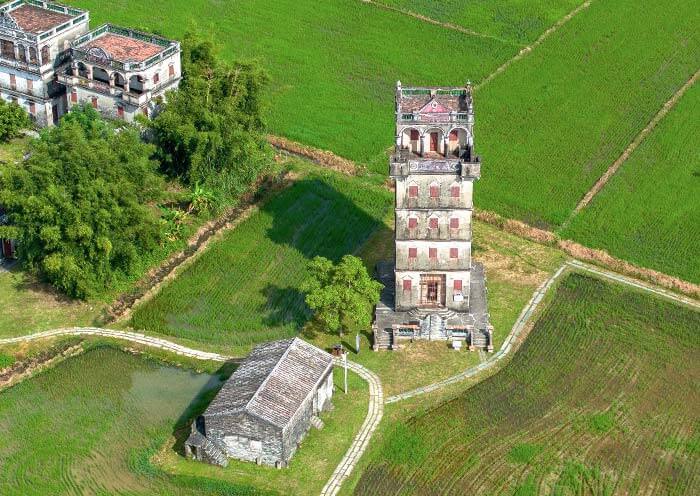


Price: What’s Included & What’s Excluded
What’s Included?
What’s Excluded?
Important Trip Notes for Booking a Private China Tour
Accommodation & Hotel Condition for Your China Tour
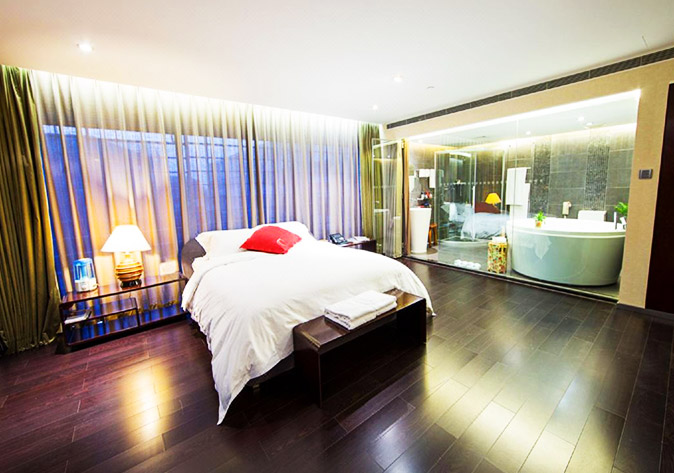



Photo Gallery for This Itinerary
Latest Guangzhou Tours Reviews from Our Customers

SiewGeok Tay
Malaysia
Destination(s): Guangzhou/Shenzhen
Date of Experience: Jan 22, 2025
Tour Customized by: Victor
You May be Interested in This Tour: Customized Tour

USJ
Malaysia
Victor, our tour advisor, responded with a proposal which needed minimum fine-tunning. He was detailed, responsive and knowledgeable.
This tour was customised, covering Guangzhou, Foshan, Kaipeng, Chung San, Dongguan, Shenzhen.
Victor was considerate and thoughtful - the schedule was spaced out with time for relaxing breaks and leisurely visits.
It was both educational and "experiencial" and we had time to mingle with the locals and visited both old and new parts of each of the cities.
We will engage their professional advice for our next visit.
Destination(s): Guangzhou/Shenzhen
Date of Experience: Mar 12, 2025
Tour Customized by: Victor
You May be Interested in This Tour: Customized Tour

SULTAN SARA
USA
Our family of four travelled to China on a customized tour organized by Asia Odyssey and we couldn’t be happier with the experience. Our personal planner, Cecilia, made sure all our must-do items were taken care of and she added just the right amount of adventure and rest that was needed. They took care of every need and we had amazing guides in every city waiting to show us around. The communication was great and we are already planning future Asia travels with Cecilia and Asia Odyssey! Highly recommend them.
Destination(s): Beijing, Zhangjiajie, Guangzhou/Shenzhen
Date of Experience: Dec 03, 2024
Tour Customized by: Cecilia
You May be Interested in This Tour: Customized Tour
Price: Request
(Based on a private tour for two people. Price varies depending on program, travel date, number of people.)
Free Enquiry! You don’t need to pay for the reservation.
- United States (+1)
- Australia (+61)
- Singapore (+65)
- Malaysia (+60)
- Philippines (+63)
- Canada (+1)
- Italy (+39)
- Indonesia (+62)
- United Kingdom (+44)
- Spain (+34)
- Mexico (+52)
- Hong Kong (+852)
- Thailand (+66)
- United Arab Emirates (+971)
- New Zealand (+64)
- South Africa (+27)
- Germany (+49)
- Brazil (+55)
- India (+91)
- France (+33)
- Vietnam (+84)
- The Netherlands (+31)
- Saudi Arabia (+966)
- Ireland (+353)
- Argentina (+54)
- Switzerland (+41)
- Romania (+40)
- Pakistan (+92)
- Japan (+81)
- Portugal (+351)
- Bangladesh (+880)
- South Korea (+82)
- Puerto Rico (+1)
- Türkiye (+90)
- China (+86)
- Belgium (+32)
- Qatar (+974)
- Greece (+30)
- Taiwan (+886)
- Austria (+43)
- Poland (+48)
- Israel (+972)
- Chile (+56)
- Sri Lanka (+94)
- Nigeria (+234)
- Peru (+51)
- Colombia (+57)
- Hungary (+36)
- Nepal (+977)
- Denmark (+45)
- Bulgaria (+359)
- Norway (+47)
- Slovenia (+383)
- Sweden (+46)
- Kuwait (+965)
- Costa Rica (+506)
- Ecuador (+593)
- Venezuela (+58)
- Malta (+356)
- Croatia (+385)
- Tunisia (+216)
- Czechia (+420)
- Mongolia (+976)
- Bahrain (+973)
- Mauritius (+230)
- Papua New Guinea (+675)
- Cambodia (+855)
- Dominican Republic (+1)
- Luxembourg (+352)
- Finland (+358)
- Guatemala (+502)
- Myanmar (+95)
- Maldives (+960)
- Slovakia (+421)
- Laos (+856)
- Serbia (+381)
- Brunei (+673)
- Oman (+968)
- Macao (+853)
- Panama (+507)
- Morocco (+212)
- Jordan (+962)
- Georgia (+995)
- Fiji (+679)
- Bolivia (+591)
- Lithuania (+370)
- Bahamas (+1)
- Cyprus (+357)
- Latvia (+371)
- Bhutan (+975)
- Iraq (+964)
- Iran (+98)
- Kenya (+254)
- Jamaica (+1)
- Zimbabwe (+263)
- Azerbaijan (+994)
- Uruguay (+598)
- Estonia (+372)
- Andorra (+376)
- Cameroon (+237)
- Ghana (+233)
- Kazakhstan (+7)
- Nicaragua (+505)
- Egypt (+20)
- Russia (+7)
- Albania (+355)
- Réunion (+262)
- Montenegro (+382)
- Algeria (+213)
- Afghanistan (+93)
- Martinique (+596)
- Uganda (+256)
- Honduras (+504)
- North Macedonia (+389)
- Trinidad and Tobago (+1)
- Suriname (+597)
- Antigua and Barbuda (+1)
- Zambia (+260)
- Ukraine (+380)
- Armenia (+374)
- Barbados (+1)
- Belarus (+375)
- Palestine (+970)
- Lesotho (+266)
- Moldova (+373)
- Ethiopia (+251)
- French Polynesia (+689)
- Gambia (+220)
- Guam (+1)
- Gibraltar (+350)
- Isle of Man (+44)
- New Caledonia (+687)
- El Salvador (+503)
- Comoros (+269)
- Seychelles (+248)
- Chad (+235)
- Samoa (+685)
- Cook Islands (+682)
- Palau (+680)
- Paraguay (+595)
- DR Congo (+243)
- Solomon Islands (+677)


